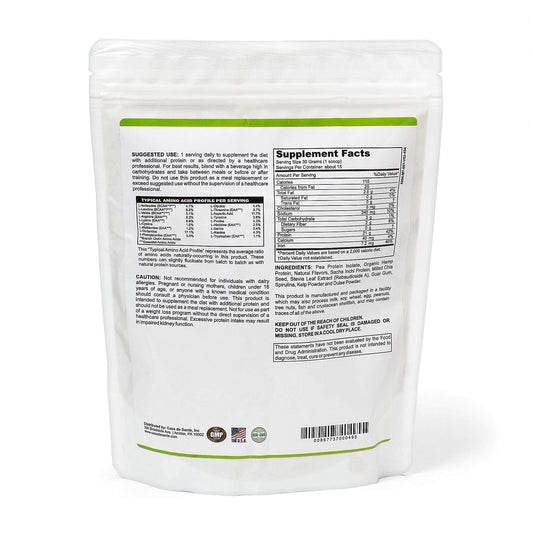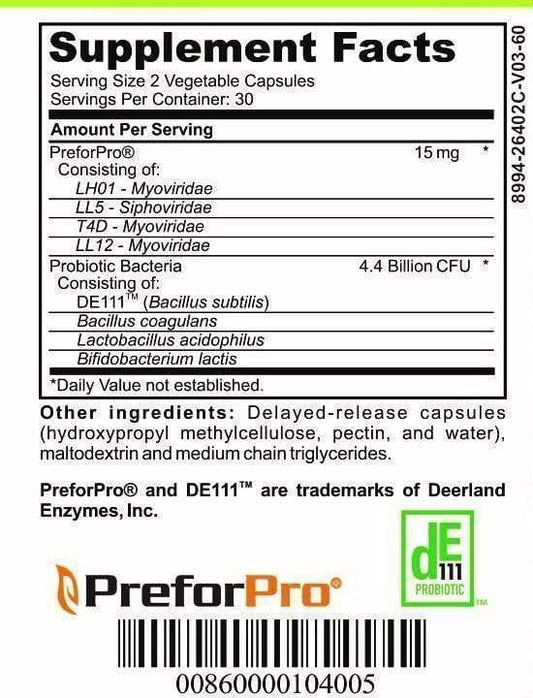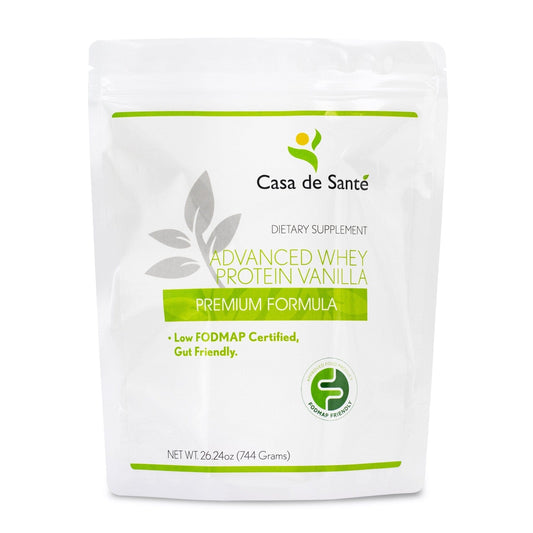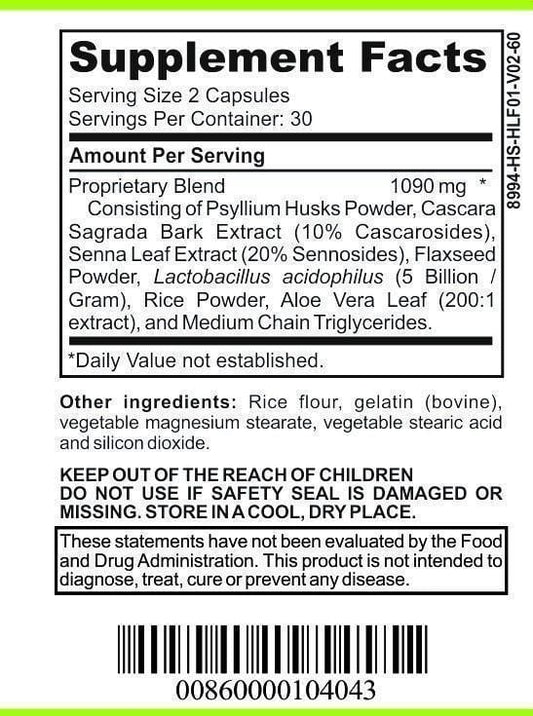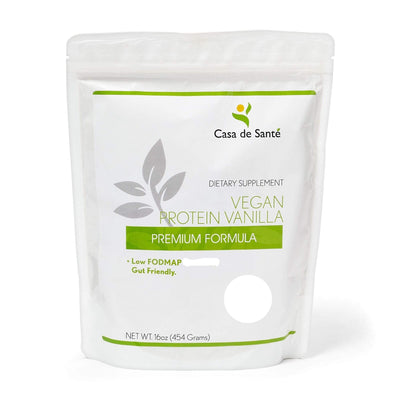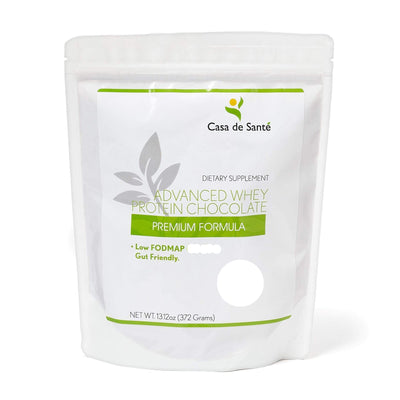96 Food Panel: IgE by US BioTek Vs T.R.U.E. Test (Thin-layer Rapid Use Epicutaneous Test)
96 Food Panel: IgE by US BioTek Vs T.R.U.E. Test (Thin-layer Rapid Use Epicutaneous Test)
In the world of allergy testing, there are various methods available to help identify and diagnose food allergies. Two popular options are the 96 Food Panel: IgE by US BioTek and the T.R.U.E. Test (Thin-layer Rapid Use Epicutaneous Test). These tests offer valuable insights into a person's allergic reactions and can aid in determining appropriate treatment plans. In this article, we will explore the basics of food allergy testing, the science behind these tests, and compare the 96 Food Panel: IgE by US BioTek to the T.R.U.E. Test in terms of accuracy, ease of use, convenience, and cost. Additionally, we will weigh the pros and cons of each test to help you make an informed decision regarding your allergy testing needs.
Understanding the Basics of Food Allergy Testing
Food allergy testing is an important tool for identifying specific food allergens that trigger allergic reactions in individuals. Such reactions can range from mild discomfort to severe anaphylaxis, making it crucial to accurately diagnose and manage food allergies. Both the 96 Food Panel: IgE by US BioTek and the T.R.U.E. Test are designed to aid in this process.
What is the 96 Food Panel: IgE by US BioTek?
The 96 Food Panel: IgE by US BioTek is an advanced test that assesses a person's immune response to a panel of 96 different foods. It measures the levels of IgE antibodies specific to each food allergen, providing valuable information about which foods may trigger an allergic reaction in an individual.
When a person undergoes the 96 Food Panel: IgE test, a blood sample is taken and analyzed in a laboratory. The sample is exposed to the 96 different food allergens, and the levels of IgE antibodies produced in response to each allergen are measured. This comprehensive test allows healthcare professionals to pinpoint specific food allergens that may be causing allergic reactions in the individual.
Once the results of the 96 Food Panel: IgE test are obtained, healthcare professionals can provide personalized advice on managing food allergies. This may involve avoiding certain foods, implementing dietary changes, and carrying emergency medication such as epinephrine auto-injectors for severe reactions.
An Overview of T.R.U.E. Test (Thin-layer Rapid Use Epicutaneous Test)
The T.R.U.E. Test works differently from the 96 Food Panel: IgE by US BioTek. It is a patch test that involves applying patches with various allergens onto the patient's back. Through this test, the presence of delayed-type hypersensitivity reactions can be detected, helping identify potential allergens causing contact dermatitis.
During the T.R.U.E. Test, a healthcare professional applies small patches containing common allergens, such as fragrances, preservatives, and metals, onto the patient's back. The patches are left in place for 48 hours, during which the patient avoids getting them wet. After 48 hours, the patches are removed, and the healthcare professional examines the patient's skin for any signs of allergic reactions.
The T.R.U.E. Test is particularly useful in diagnosing contact dermatitis, a type of allergic reaction that occurs when the skin comes into contact with an allergen. By identifying the specific allergens causing contact dermatitis, healthcare professionals can recommend avoidance strategies and appropriate treatments to relieve symptoms.
It is important to note that while the T.R.U.E. Test can help identify allergens causing contact dermatitis, it may not be as effective in diagnosing food allergies. For food allergies, the 96 Food Panel: IgE by US BioTek is a more suitable choice.
The Science Behind Food Allergy Testing
Understanding the science behind food allergy testing is essential to comprehend how these tests provide reliable results. Food allergies are a growing concern worldwide, affecting millions of people. These allergies occur when the immune system identifies harmless substances, such as food proteins or environmental allergens, as threats. To understand how food allergy testing works, it is crucial to explore the role of IgE antibodies in allergic reactions.
The Role of IgE in Allergic Reactions
Allergic reactions occur when the immune system overreacts to certain substances, mistakenly perceiving them as harmful invaders. In the case of food allergies, IgE antibodies play a significant role. IgE antibodies are specific proteins produced by the immune system in response to an allergen. These antibodies bind to the allergen, triggering an immune response that leads to the release of chemicals, such as histamine, which cause allergy symptoms.
When a person with a food allergy consumes a particular food, the immune system recognizes the proteins in that food as potential threats. It then produces IgE antibodies that bind to these proteins, marking them for destruction. This immune response can cause a range of symptoms, from mild itching and hives to severe anaphylaxis, a life-threatening reaction.
Food allergy testing aims to identify the specific food proteins that trigger an allergic reaction in an individual. By understanding the science behind IgE-mediated allergic reactions, healthcare professionals can design effective tests to diagnose and manage food allergies.
How the T.R.U.E. Test Works
The T.R.U.E. Test is a type of allergy testing commonly used to diagnose contact dermatitis, a skin condition caused by allergic reactions to certain substances. While it is not specifically designed for food allergies, it provides valuable insights into the mechanisms of allergic reactions.
The T.R.U.E. Test involves applying patches to the back of the patient, containing various potential allergens commonly associated with contact dermatitis. These allergens may include metals, fragrances, preservatives, and other substances known to cause skin reactions. The patches are left on the skin for a specific duration, usually 48 hours, allowing the allergens to come into contact with the skin.
If a person is allergic to any of the tested substances, a reaction will occur at the site of the patch, indicating sensitization to that specific allergen. The reaction may manifest as redness, itching, or swelling. This type of testing helps healthcare professionals identify the specific allergens that trigger allergic reactions in patients, enabling them to develop tailored treatment plans.
While the T.R.U.E. Test does not directly assess food allergies, it provides valuable insights into the immune system's response to allergens. By understanding the mechanisms behind contact dermatitis, researchers can gain a deeper understanding of how the immune system reacts to different substances, including food proteins.
Food allergy testing methods continue to evolve as scientists uncover new insights into the complex interactions between the immune system and allergens. The science behind these tests is constantly advancing, leading to improved diagnostic accuracy and more precise management of food allergies.
Comparing the 96 Food Panel: IgE by US BioTek and T.R.U.E. Test
When considering which allergy test is right for you, several factors will come into play. Let's examine the accuracy, ease of use, convenience, and cost of both the 96 Food Panel: IgE by US BioTek and the T.R.U.E. Test.
Accuracy and Reliability
The 96 Food Panel: IgE by US BioTek and the T.R.U.E. Test have shown promising accuracy in diagnosing food allergies and contact dermatitis, respectively. These tests have been extensively studied and have been proven to be reliable in identifying specific allergens that may trigger allergic reactions or skin irritations. However, it is important to note that no test is 100% foolproof, and false positives or negatives may still occur. Therefore, it is crucial to consult with a healthcare professional to interpret the results accurately and make informed decisions about managing allergies or dermatitis.
Researchers and medical experts have continually worked towards improving the accuracy of allergy tests. The 96 Food Panel: IgE by US BioTek and the T.R.U.E. Test are the result of years of research and development, incorporating the latest scientific advancements in immunology and dermatology. These tests have undergone rigorous testing and validation to ensure their reliability and effectiveness in diagnosing allergies and skin conditions.
Ease of Use and Convenience
The 96 Food Panel: IgE by US BioTek requires a blood sample to measure IgE levels. Although this process is relatively simple, it does involve a needle prick, which some individuals may find uncomfortable. However, healthcare professionals are trained to perform blood draws efficiently and with minimal discomfort. They use sterile techniques to ensure patient safety and accurate results.
On the other hand, the T.R.U.E. Test involves placing patches on the back, requiring minimal effort on the part of the patient. These patches contain a wide range of common allergens that are known to cause contact dermatitis. The patches are left on the skin for a specific duration, typically 48 hours, during which the skin's reaction to the allergens is monitored. This non-invasive method is well-suited for individuals who may be apprehensive about blood draws or have specific medical conditions that make blood sampling challenging.
Both the 96 Food Panel: IgE by US BioTek and the T.R.U.E. Test offer convenience in terms of sample collection. However, it is essential to consider personal preferences, medical conditions, and any specific instructions provided by healthcare professionals when choosing between the two tests.
Cost Comparison
The cost of allergy testing can vary depending on various factors, including geographic location, healthcare provider, and insurance coverage. Generally, the 96 Food Panel: IgE by US BioTek tends to be more expensive than the T.R.U.E. Test due to the comprehensive nature of the food allergen panel.
The 96 Food Panel: IgE by US BioTek offers a comprehensive analysis of 96 different food allergens, providing a detailed profile of potential food sensitivities. This extensive panel allows healthcare professionals to identify specific triggers accurately, enabling individuals to make informed dietary choices and manage their allergies effectively. However, the comprehensive nature of this test contributes to its higher cost compared to other allergy tests.
The T.R.U.E. Test, on the other hand, focuses specifically on contact dermatitis and screens for a selected panel of common allergens known to cause skin reactions. This targeted approach allows for a more cost-effective option for individuals primarily concerned with identifying potential irritants causing skin allergies.
It is important to note that the cost of allergy testing should not be the sole determining factor when choosing between the 96 Food Panel: IgE by US BioTek and the T.R.U.E. Test. Other considerations, such as the individual's medical history, symptoms, and the expertise of healthcare professionals, should also be taken into account to ensure accurate diagnosis and appropriate management of allergies or dermatitis.
Pros and Cons of Each Test
Considering the pros and cons of each test can further assist in making an informed decision regarding allergy testing.
Advantages of the 96 Food Panel: IgE by US BioTek
- Comprehensive panel covering a wide range of common food allergens
- Quantitative measurement of IgE levels
- Helpful in identifying potential triggers for severe food allergies
Disadvantages of the 96 Food Panel: IgE by US BioTek
- Higher cost compared to other allergy tests
- May not detect all possible food allergens
- False positives or negatives may occur
Advantages of T.R.U.E. Test
- Detects potential allergens causing contact dermatitis
- Non-invasive and easy to administer
- Results can help identify skin irritants for targeted avoidance
Disadvantages of T.R.U.E. Test
- Does not provide information about food allergies
- Not suitable for all types of allergies
- False positives or negatives may occur
In conclusion, both the 96 Food Panel: IgE by US BioTek and the T.R.U.E. Test offer valuable insights for diagnosing food allergies and contact dermatitis, respectively. Consider factors such as accuracy, ease of use, convenience, and cost when choosing the most suitable test for your needs. Consulting with an allergist or healthcare provider can provide further guidance and ensure optimal test selection to determine and manage potential allergens affecting your health and well-being.


